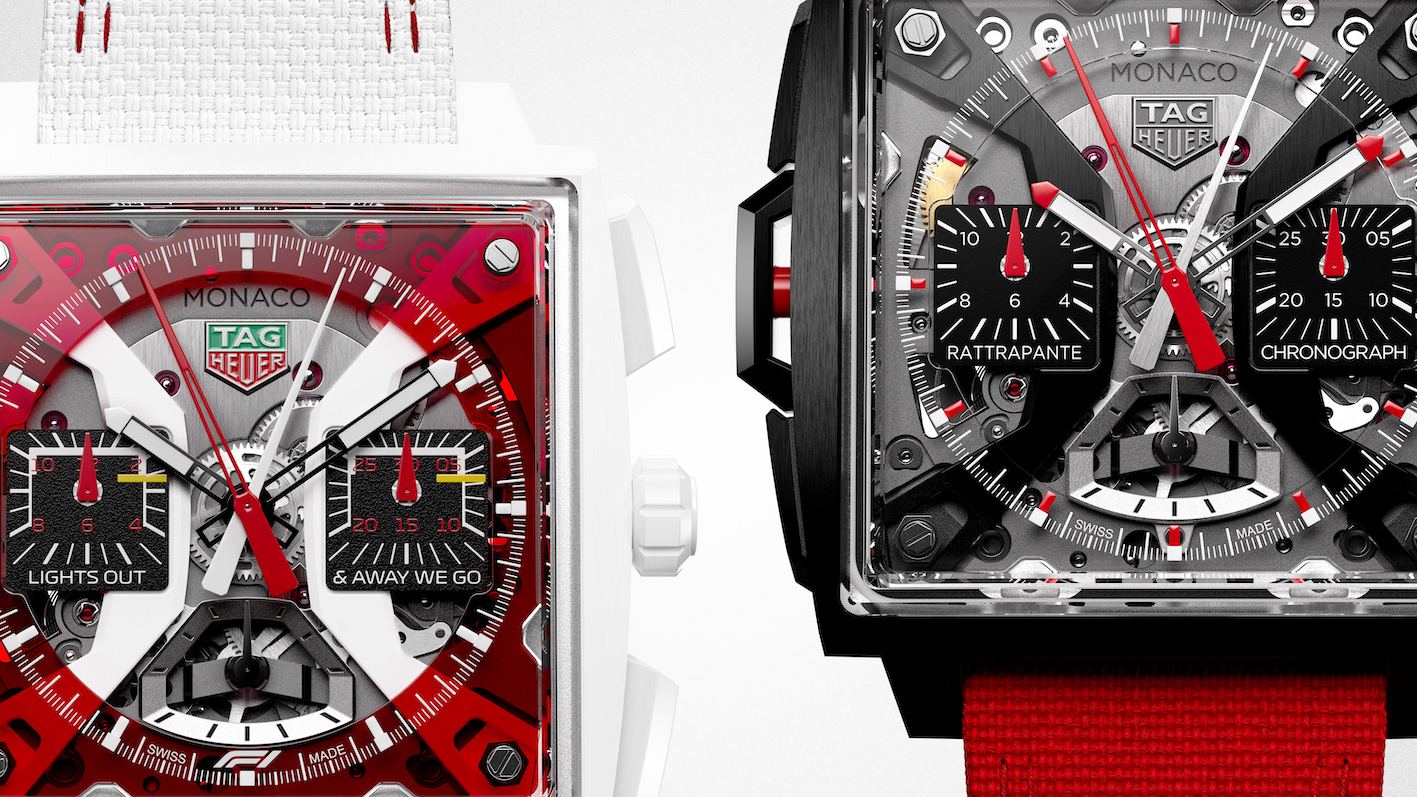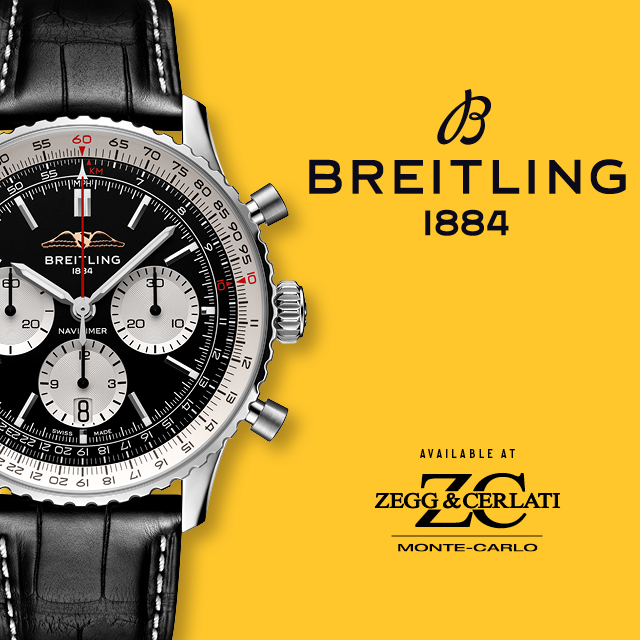We chart the watchmaker’s historic partnership with the sport and reveal what’s new for 2025.
Fans heading to the Monaco Grand Prix this month will sense something of a souped-up presence at the race—in particular from the watchmaker TAG Heuer. For the first time in the event’s nearly 100-year history, the most glamorous and dramatic race on the F1 circuit will have a title partner, and is now officially known as the Formula 1 TAG Heuer Grand Prix de Monaco.
For those lucky spectators on the Principality’s streets, that means more visible trackside brand placement—not to mention a new logo and cool TAG Heuer Monaco clocks in the paddock— while fans across the globe will find all this projected on their screens. But most notably, the partnership marks the next chapter for TAG Heuer and F1, whose multi-decade story is as much about iconic teams and equally iconic drivers as it is about innovation, performance, mental resilience and physical strength.
The new nomenclature also coincides with TAG Heuer’s return as Official Timekeeper of F1, a role it assumed in the 1990s, and which feels right on track with Formula One also celebrating its 75th anniversary. As Antoine Pin, CEO of TAG Heuer says: “With decades of history in F1 connecting us to the most successful drivers and teams of all time, we are honoured and privileged to be the name connected to the very thing that defines the winner: time.”
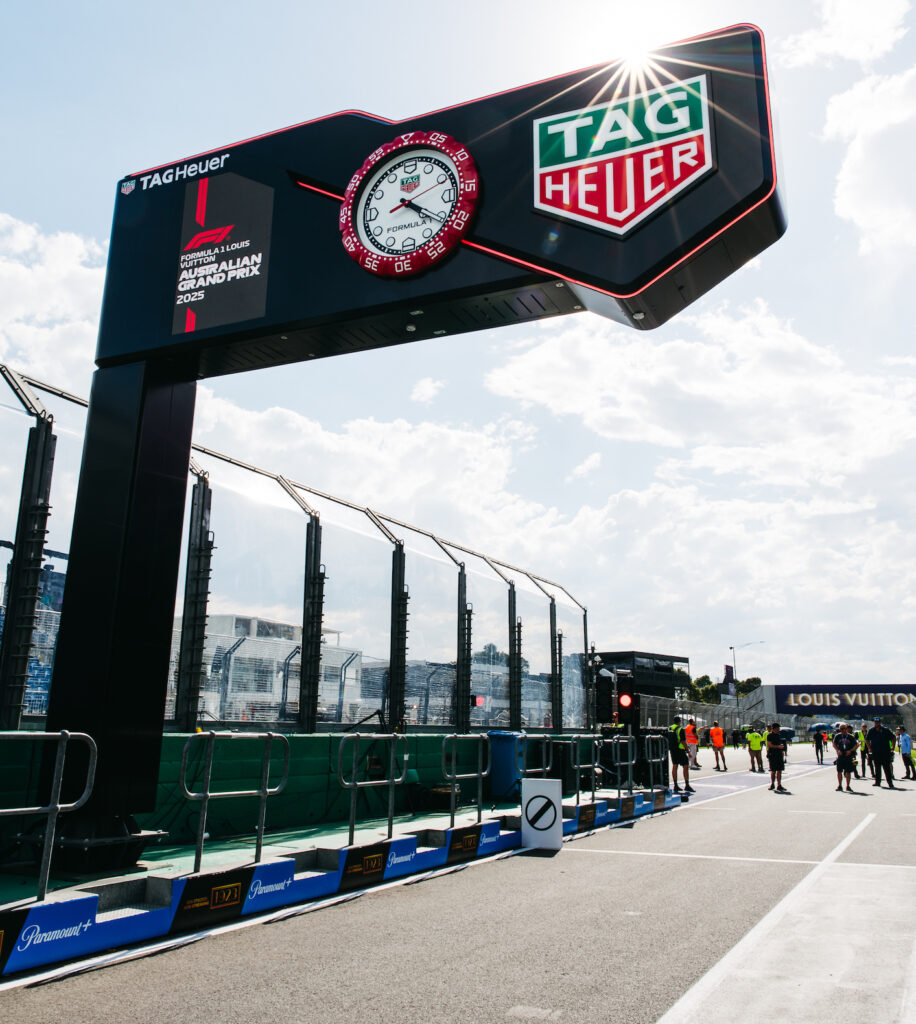
In a luxury world where big brand sponsorships are ubiquitous—not to mention easily snapped up by the largest bidder—TAG Heuer has an envious, bona fide F1 cred. As the go-to, exclusive maker of chronograph wristwatches in the 1950s, the watchmaker (then known as Heuer) was very much part of Formula One’s golden age in the late 1960s and 1970s. Jochen Rindt, the famed Lotus driver who posthumously won the 1970 World Drivers’ and Constructors’ Championships, wore a Heuer Autavia reference 2446 during his career. And in 1969, the Swiss driver Jo Siffert became the sport’s first influencer, way before it was a thing, coolly pairing his white-dial 1163 Autavia—powered by the game-changing calibre 11 automatic chronograph—with a Heuer shield on his race suit and matching logo on his Rob Walker Lotus 49B. It was the first time a watchmaker or any luxury brand had sponsored an F1 driver, and with their logo on the car to boot.
TAG Heuer’s ties to F1 deepened in the 1970s, extending from the wristwatch to cutting-edge timekeeping systems. In 1971, the company developed the Le Mans Centigraph, a state-of-the-art timing system that it pioneered for Ferrari’s new test track in Fiorano, Italy. This kicked off a nearly decade-long partnership with the Prancing Horse marque, which saw Ferrari win the World Drivers’ and Constructors’ Championships in 1975 with Niki Lauda.
Enter the 1980s and the start of one of the longest partnerships in Formula One history—between McLaren and the watchmaker (now newly acquired and known as TAG Heuer). This was coupled by one of the fiercest F1 rivalries of all time, which pitted the racing legends Alain Prost and Ayrton Senna against each other, both whom donned TAG Heuer watches.
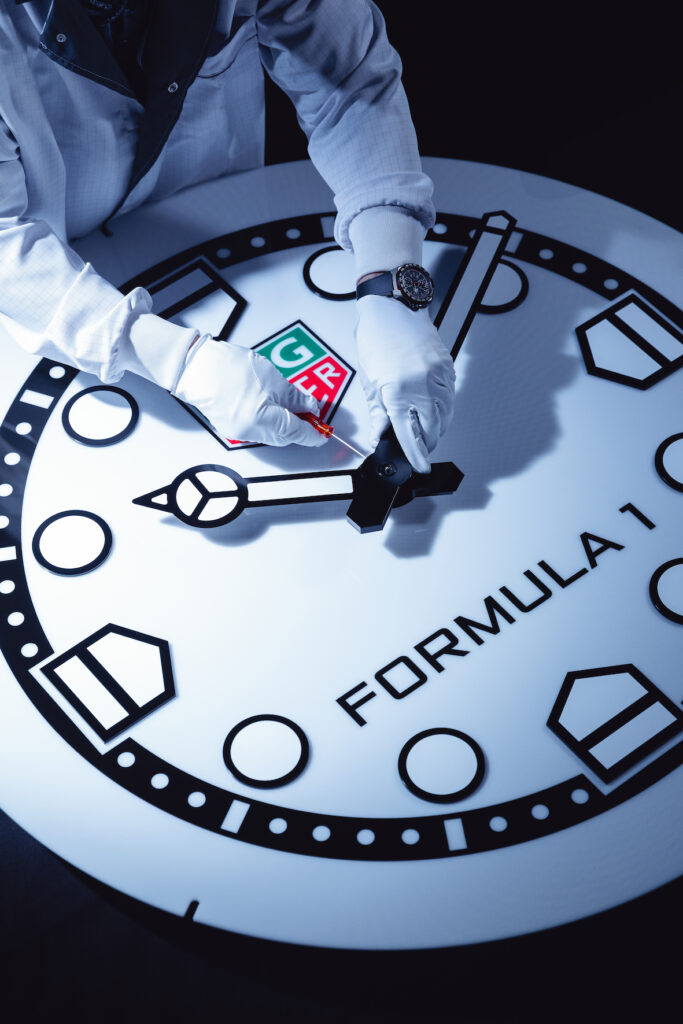
New ownership also meant deeper pockets, and 1986 saw another milestone: the launch of the TAG Heuer Formula 1 collection, a line of eye-poppingly bright and ultra-cool quartz watches that embodied F1’s bold and adventurous spirit. With punchy matching straps and dials, the watch immediately gained cult status, inspiring a whole generation of collectors. One of those was Ronnie Fieg, founder of über-cool New York fashion label Kith, who, aged 12, was gifted the original TAG Heuer F1 watch by his mum.
“It was probably the most important watch in my lifetime,” Fieg told the watchmaking publication Hodinkee in 2024, when TAG Heuer and Kith first relaunched the watch. Fieg credits the piece with initiating his watch-collector journey, adding that “people who lived through this era—1986 to early 2000s—remember how disruptive and impactful the F1 was.”
In 1992, TAG Heuer debuted as Official Timekeeping partner of F1, kicking off a new era of innovation and timekeeping tech. This meant not only leading-edge and critical timing and scoring systems, with advanced data capture and performance, but new dimensions for presenting that info to fans watching on TVs around the world. As the sport rolled into the modern era—TAG Heuer partnering with Oracle Red Bull Racing since 2016—the watchmaker continued to star in F1’s most iconic moments, and its timepieces made history alongside their wearers on the podium, most notably Mika Häkkinen, David Coulthard and Lewis Hamilton.
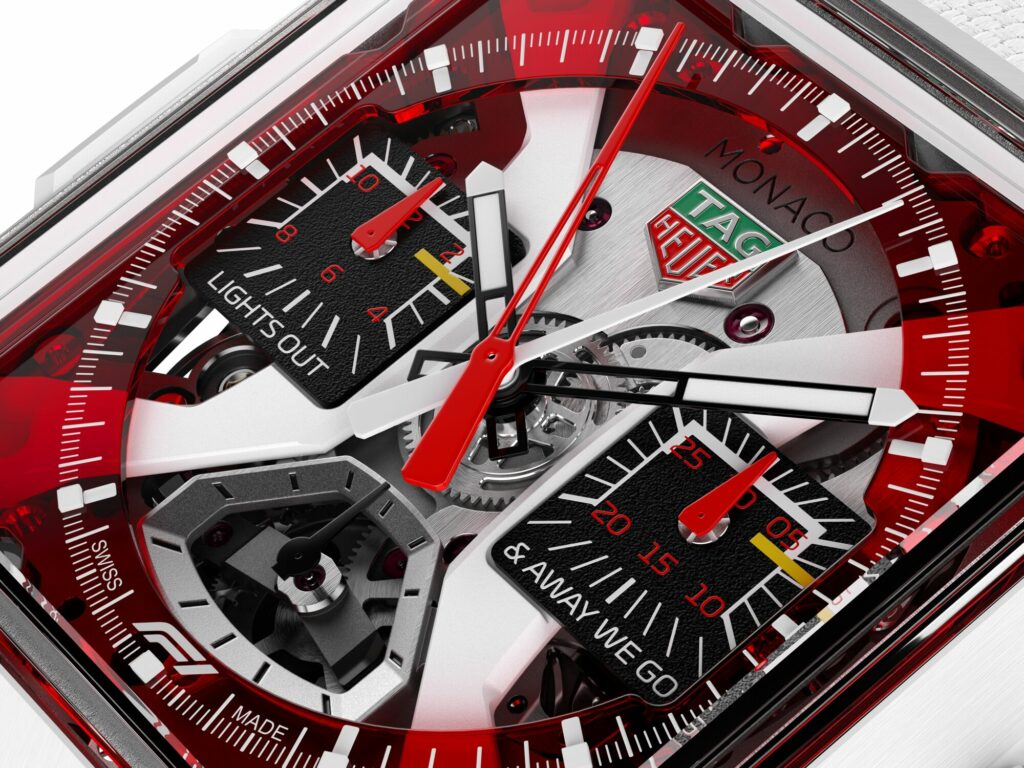
Finally of course there is the namesake watch, fittingly launched in 1969, the year TAG Heuer entered F1. The world’s first automatic and water-resistant square chronograph wristwatch, the Monaco was famously worn by the King of Cool himself, Steve McQueen, in the 1971 film Le Mans. Channelling rakish and rebellious style, it became a favourite of the likes of Sammy Davis Jr. and Stanley Kubrick.
For 2025, TAG Heuer celebrates its return to Formula One with the Monaco Split-Seconds Chronograph F1, among one of its most complex and advanced chronographs. Coming in ultra-light white ceramic, the 10-piece limited edition watch features cool racing nods: aerodynamic lines, a rotor styled in the brand’s shield shape, red-tinted translucent dial, subdials with an asphalt-like finish, and white and yellow starting grid positions. There is also a sense of fun and originality, naturally. The text “Lights Out & Away We Go” features on the dial, a reference to the legendary line from F1 commentator David Croft—and one that brilliantly evokes how exciting the future is for TAG Heuer and F1.

